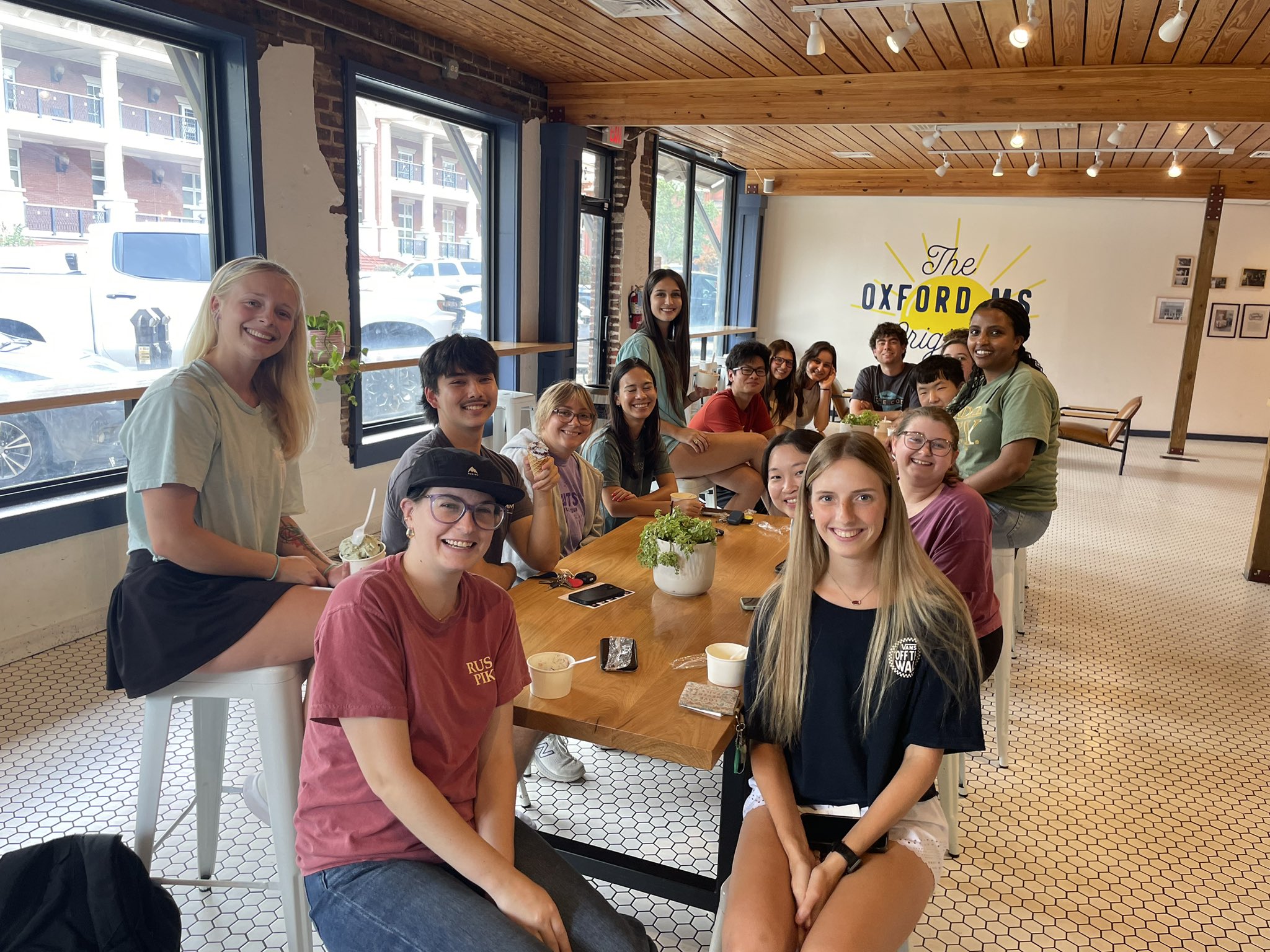Funeral Service Education Since 1939
Curriculum for the B.S. in Mortuary Science
State of Michigan Mortuary Science Licensure Requirements
Facilities Planning & Management

This content is accessible to paid subscribers. To view it please enter your password below or send mike@standardsmichigan.com a request for subscription details.
Highland College Financials | $123.6 million

2011– The History of Highlands College
The first semester of the #HCLeadershipInstitute starts in FIVE days! We can’t wait to be in the room with our HC Family. Give your campus a shoutout below!
If you are an adult who is eager to grow in your leadership and make an eternal impact, visit https://t.co/BenaBYnxUT! 👏 pic.twitter.com/v1pgcVbp5V
— Highlands College (@HCollege) August 15, 2024
Open agenda; Not Too Organized. Whatever anyone wants to talk about. We do this once every month. Yesterday’s “Student Accommodation” syllabus slid out of view for part of the day so it is reposted today. Use the login credentials at the upper right of our home page.
Normal Academic Year Hours at our State Street Office: 8:30 AM – 4:00 PM
Join us for lunch 11:45 AM – 1:15 PM every Third Wednesday of the month
University of Michigan Golf Course Dining Facility
Lights, camera, Aggies! We are so back. #collegelife #utahstateaggies #BackToSchool pic.twitter.com/5mcDz8dVEf
— Utah State University (@USUAggies) August 28, 2025
School custodians are the reason why students arrive to new & refreshed school facilities when the school year begins.
Thank you, school custodians, for working through the summer & throughout the year to maintain our physical spaces. #ThankYouThursday #BackToSchool pic.twitter.com/QSiM21HEr9
— U.S. Department of Education (@usedgov) August 28, 2025
THE COLLEGE CRISIS
A massive number of colleges and universities have shut down within the last couple of years, or will shut down in the next few.
Many of these colleges have cited financial hardship or enrollment decline as reasons for closure. But what’s really going on? 🧵 pic.twitter.com/MoF1Iiejzd
— Alec Bianco (@alecmbianco) June 18, 2024
Happy Midsummer! 🌺☀️🇸🇪🎉
We had so much fun celebrating the magic of this Swedish tradition by making flower wreaths, dancing around the maypole, enjoying a smorgasbord buffet and music with our American friends, families and allies here in DC. pic.twitter.com/NC9tEKa4RS
— Embassy of Sweden USA (@SwedeninUSA) June 21, 2024
In honor of Charles-Augustin de Coulomb’s birthday, we would like you to know that 1 coulomb is equal to the charge of 6.24 quintillion (billion billion) electrons! pic.twitter.com/VnrLu0Lb0P
— National Institute of Standards and Technology (@NIST) June 14, 2024
What is the #USNC and how does it impact #standards for #electrotechnology?
In honor of Charles-Augustin de Coulomb’s birthday, we would like you to know that 1 coulomb is equal to the charge of 6.24 quintillion (billion billion) electrons! pic.twitter.com/VnrLu0Lb0P
— National Institute of Standards and Technology (@NIST) June 14, 2024
Learn more about the U.S. National Committee to the International Electrotechnical Commission (IEC) in a new video: Welcome to the USNChttps://t.co/hsKfDrxaVO pic.twitter.com/qA8WEYsIg8
— ANSI (@ansidotorg) June 21, 2024
📢📢📢
MSU Observatory will be open for public observing twice a month between April and September. Stay tuned for our public events schedule.. 🔭🌕🪐💫@MSUNatSci @michiganstateu
Video credit: EA Photography
Audio credit: Epicomposer pic.twitter.com/hGF9oEidqd— MSU Observatory (@MSU_Observatory) March 6, 2023
Showing him my roots in the showmestate ❤️ pic.twitter.com/KDwGaKKfCj
— Beth Hoover (@Bethalma7) May 25, 2024
The IEEE P3119 draft standard is designed to help strengthen AI procurement approaches, using due diligence to ensure that agencies are critically evaluating the AI services and tools they acquire.https://t.co/ujVJxZqjEm @InstituteIEEE
— IEEE Standards Association | IEEE SA (@IEEESA) May 19, 2024
— Standards Michigan (@StandardsMich) May 25, 2024
The word #standard is commonly used in daily language, so much so that people do not always reflect on its definition. Learn how ASTM International’s Regulations Governing ASTM Technical Committees (aka “Green Book”) defines them. #standards See https://t.co/oSBmwh1lbX pic.twitter.com/ynk87XDr7D
— ASTM International (@ASTMIntl) May 21, 2024
I taught these boys (grown men!) when they were just 6 and now they are graduating from college 😮 pic.twitter.com/eNmVf6HiXy
— Sarah Oberle (@S_Oberle) May 21, 2024
The ICC Pulse’s 50th episode, Building Safety as Told by Kids, features children of Code Council staff exploring building safety in their homes. #BuildingSafetyMonth2024 #BuildingSafety365 https://t.co/Hllb1jo9j7
— IntlCodeCouncil (@IntlCodeCouncil) May 23, 2024
“Abide withe Me” | Clare College Choir@ClareChoir @mrgrahamross
.https://t.co/9u1ASZ90MMhttps://t.co/aCNGzZGLJwhttps://t.co/rq3Z9P69E3 pic.twitter.com/J28NhRppBW— Standards Michigan (@StandardsMich) May 19, 2024
“Freebird” Lynyrd Skynyrd Cover | Jacobs University Graduation Band@jacobs_bremen @constructor_uni @IEEECampushttps://t.co/uJD4vqwuLehttps://t.co/wOd3uDeAgZ pic.twitter.com/PQOVYsj8w7
— Standards Michigan (@StandardsMich) May 18, 2024
🏆 We applaud the brilliant minds shortlisted for the 2024 IEEE PES Power Engineering Education Committee (PEEC) Outstanding Doctoral Dissertation Award!
View the announcement & list: https://t.co/jRBmleowel#ieeepes #ieeepesgm #PEEC #powerengineering #electricalengineering pic.twitter.com/Tl6zhCYITY
— IEEE Power & Energy Society (@ieee_pes) May 23, 2024
There’s still time to enter ANSI’s 2024 Student Paper Competition! Win a cash prize by sharing how standards impact #AI. Check out the details:https://t.co/DjXcqf3yRP#studentcompetition #studentnews pic.twitter.com/4IB52fNccm
— ANSI (@ansidotorg) May 24, 2024
Last Families meeting of the year and we are looking forward to big and small adventures this summer! 💚 pic.twitter.com/CvQxtNt1ol
— Mrs. Riley (@MrsRiley_MVES) May 17, 2024
|
“The coffee-house is an original British institution, but as there are daily effusions of wit and humor in several of these little periodical papers, I think we may be justly said to have our Coffee-houses among us.” (From “The Spectator,” No. 9, March 10, 1711) |
Michigan Central | Major Projects | University of Michigan Capital Plan
Ellie Younger: Best Coffee Spots Near Campus
Artisanal coffee departs from mass-market approaches and replaces it with emphasis on craftsmanship, quality, and attention to detail throughout the entire process—from cultivation to brewing. Key aspects:
» Artisanal coffee producers often prioritize high-quality beans. They might focus on specific varieties, regions, or even single-origin beans, showcasing unique flavors and characteristics.
» The roasting process is considered an art in itself. Artisanal coffee roasters carefully roast the beans to bring out the best flavors. They may experiment with different roasting profiles to achieve specific taste profiles.
» Unlike mass-produced coffee, artisanal coffee is often roasted in smaller batches. This allows for better quality control and the ability to pay closer attention to the nuances of each batch.
» Artisanal coffee is appreciated for its distinct flavor profile. Roasters and baristas might highlight tasting notes, aromas, and other characteristics that make each cup unique.
» Artisanal coffee shops or enthusiasts often explore various brewing methods, such as pour-over, AeroPress, or siphon brewing. These methods can be more time-consuming but are believed to extract the best flavors from the beans.
From the way the beans are ground to the water temperature during brewing, artisanal coffee enthusiasts pay attention to every detail to ensure a superior cup of coffee.
— Publisher Marketing
The Great Good Place: Ray Oldenburg
|
“I have often pleased myself with considering the two different scenes of life which are carried on at the same time in those different places of rendezvous, and putting those of the playhouse and the coffee-house together.” (From “The Spectator,” No. 10, March 12, 1711) |
America’s Cultural Revolution: How the Radical Left Conquered Everything
|
“For decades, left-wing radicals patiently built a revolution in the shadows. Then suddenly, after the death of George Floyd, their ideas exploded into American life. Corporations denounced the United States as a “system of white supremacy.” Universities pushed racially segregated programs that forced students to address their racial and sexual “privilege.” And schools injected critical race theory in the classroom, dividing children into “oppressor” and “oppressed.” In this New York Times bestseller, Christopher F. Rufo exposes the inner history of the left-wing intellectuals and militants who slowly and methodically captured America’s institutions, with the goal of subverting them from within. With profiles of Herbert Marcuse, Angela Davis, Paulo Freire, and Derrick Bell, Rufo shows how activists have profoundly influenced American culture with an insidious mix of Marxism and racialist ideology. They’ve replaced “equality” with “equity,” subverted individual rights in favor of group identity, and convinced millions of Americans that racism is endemic in all of society. Their ultimate goal? To replace the constitution with a race-based redistribution regime, administered by “diversity and inclusion” commissars within the bureaucracy. America’s Cultural Revolution is the definitive account of the radical Left’s long march through the institutions. Through deep historical research, Rufo shows how the ideas first formulated in the pamphlets of the Weather Underground, Black Panther Party, and Black Liberation Army have been sanitized and adopted as the official ideology of America’s prestige institutions, from the Ivy League universities to the boardrooms of Wal-Mart, Disney, and Bank of America. But his book is not just an exposé. It is a meticulously-researched and passionate refutation of the arguments of CRT—and a roadmap for the counter-revolution to come.” |
“To be at home is to have a place in the world which is yours, where you are not a stranger and where you find the outlines of your identity. In the modern world, however, where the sense of home has been eroded by technology and bureaucracy, architecture can create a substitute for this sense, by defining spaces which answer to the dreams and memories of the people who live in them.”
— Roger Scruton
In 1936, a team of @NIST researchers, including optical physicist Irvine Gardner, joined National Geographic Society to observe June solar eclipse with a 9-inch astrographic lens Gardner designed. He has 9 patents, including for the wide-angle binocular telescope & range finder. pic.twitter.com/BblX8FnTBL
— USPTO (@uspto) April 3, 2024
Department of Justice Antitrust Case Filings
…When we talk about standards in our personal lives, we might think about the quality we expect in things such as restaurants and first dates. But the standards that exist in science and technology have an even greater impact on our lives. Technical standards keep us safe, enable technology to advance, and help businesses succeed. They quietly make the modern world tick and prevent technological problems that you might not realize could even happen…”
“The family is nature’s masterpiece”
–– George Santayana
Michigan’s compulsory school attendance laws, outlined in the Revised School Code (MCL 380.1561), mandate that children aged 6 to 18 attend school regularly, ensuring access to education and promoting academic success. The law requires attendance in a public school, charter school, private school, or approved homeschool program until the child graduates high school or reaches 18. For children aged 6 to 16, attendance is strictly compulsory, with exceptions for those completing high school early. After age 16, students may withdraw with parental consent, but alternative education options are encouraged.
Parents or guardians are responsible for ensuring compliance, and non-attendance may result in truancy proceedings, including fines or court intervention. Schools must monitor attendance, report truancy, and provide support to address barriers like transportation or health issues. Exemptions exist for religious beliefs or specific disabilities, provided educational alternatives meet state standards. Local districts may enforce additional policies to support consistent attendance.
University of Mississippi Financial Statement 2023: $1.207B

Demystifying the graduate school application process with our #nanoREU students @OxfordCreamery 🍦 pic.twitter.com/4HLda9lhSC
— Nikki Reinemann (@OleMiss_MBELab) July 15, 2024
Southern ice cream often differs from ice cream in other regions of the U.S. in several ways, reflecting regional tastes, ingredients, and traditions:
These differences highlight the South’s rich culinary traditions and how they extend even to sweet treats like ice cream.
This content is accessible to paid subscribers. To view it please enter your password below or send mike@standardsmichigan.com a request for subscription details.
New update alert! The 2022 update to the Trademark Assignment Dataset is now available online. Find 1.29 million trademark assignments, involving 2.28 million unique trademark properties issued by the USPTO between March 1952 and January 2023: https://t.co/njrDAbSpwB pic.twitter.com/GkAXrHoQ9T
— USPTO (@uspto) July 13, 2023
Standards Michigan Group, LLC
2723 South State Street | Suite 150
Ann Arbor, MI 48104 USA
888-746-3670
